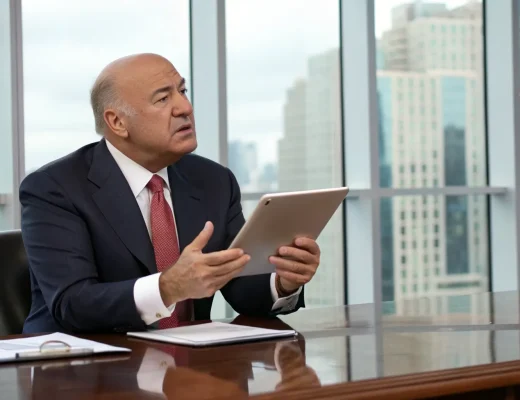Warren Buffett’s outsized investment returns at Berkshire Hathaway have made him Wall Street’s most-followed money manager. Known for his long-term investment strategies,
Buffett has positioned Berkshire’s $296 billion investment portfolio for continued success. For decades, Buffett has been famed for his investment acumen.
Under his leadership as the CEO of
Berkshire Hathaway, the company has seen its Class A shares (BRK.A) soar by 5,882,492% as of July 3. This performance significantly outstrips the S&P 500’s total return over the same period. Buffett’s willingness to share his investment experiences has endeared him to the investing community, attracting around 40,000 people annually to Omaha to hear him speak about the U.S. economy and the
stock market.
However, a key valuation tool that
Buffett once described as the “best single measure” of stock valuations is triggering alarm bells. Known as the Buffett Indicator, this tool adds up the value of all publicly traded companies and divides it by the U.S. gross domestic product (GDP). Historically, this ratio averaged 85%, but it recently surged to an all-time high of 209.53%, indicating that stocks are exceptionally pricey.
When equities are overpriced,
Buffett has shown a readiness to pare down Berkshire Hathaway’s exposure and wait for better deals. The company’s
cash flow statements reveal that Buffett has been a net seller of stocks for 10 consecutive quarters.
Buffett’s valued investment perspective
The skyrocketing Buffett Indicator is bad news for Wall Street, signaling that value is becoming increasingly rare. Nonetheless, the Oracle of Omaha remains optimistic about America’s long-term prospects. In Berkshire Hathaway’s 2021 annual letter, Buffett wrote: “Never bet against America.” This reflects his understanding of economic cycles, where recessions, though inevitable, are typically brief compared to longer periods of economic expansion.
Buffett’s investment strategy often involves acquiring highly cyclical companies that thrive over extended economic growth periods. The average U.S. recession lasts only about 10 months, but economic expansions can span approximately five years. As a result, U.S. GDP has expanded over time, justifying Buffett’s confidence in America’s economic future.
Even though downturns are part of the economic landscape, they tend to resolve quickly. For example, a data set from Bespoke Investment Group highlighted that the average S&P 500 bear market since the start of the Great Depression lasted about 9.5 months, while bull markets extended for nearly three years on average. While the current high Buffett Indicator is concerning for Wall Street in the short term, Buffett’s strategy suggests that an eventual market correction will present lucrative investment opportunities.
His approach emphasizes patience and a long-term perspective, betting on the growth of high-quality companies. In sum,
Warren Buffett’s favorite valuation tool is signaling trouble in the short term, but his faith in America’s economic resilience remains steadfast, offering a roadmap for investors to follow.







